Hiraki Sawa - Elsewhere / Spotter (2002 - 2003)
Wednesday, August 13, 2008





Hiraki Sawa was born in Ishikawa, Japan in 1977 and currently lives in London. He uses lo-tech video animation to create poetic dreamscapes - ruminations on ideas of time and motion, innocence and alienation, dislocation and displacement. His seminal film, 'Dwelling', 2002 was accomplished while still a graduate student at the Slade School of Fine Art, London, and brought him to the attention of the international art world through exhibitions including New Contemporaries and East International. Certain leitmotifs recur throughout the films - a child's rocking horse, migrating animals, model jet planes - objects which play out notions of travel and nomadism, of being at home and thinking of elsewhere.
Elsewhere (2003)
b&w
Duration 7:40
Spotter (2003)
b&w
Duration 7:40
at 10:28 PM
Marcel Broodthaers - A Voyage on the North Sea (1974)






 Between 1957 and his death in 1976, Marcel Broodthaers made approximately fifty films. The exact number is difficult to determine: Several no longer exist; some are multipart "programs" assembled from groups of short films (many appropriated from industrial or otherwise "authorless" sources); and others are subtle variations on previous works. A recent exhibition at pioneering curator and collector Thomas Solomon's new gallery, Solo Projects, paired a 16-mm silent film, Un Voyage en Mer du Nord (A Voyage on the North Sea), 1973-74, with a thirty-eight-page, French-bound book that shares its title and ostensible subject matter: the pairing of a late-nineteenth-century amateur painting of an archetypal European ship and a twentieth-century photograph of a pleasure boat against a modern urban backdrop. The roughly four-minute film is projected on a retractable home-movie screen--a Broodthaers motif--and the book displayed on a simple wooden shelf, lit by a single spotlight.
Between 1957 and his death in 1976, Marcel Broodthaers made approximately fifty films. The exact number is difficult to determine: Several no longer exist; some are multipart "programs" assembled from groups of short films (many appropriated from industrial or otherwise "authorless" sources); and others are subtle variations on previous works. A recent exhibition at pioneering curator and collector Thomas Solomon's new gallery, Solo Projects, paired a 16-mm silent film, Un Voyage en Mer du Nord (A Voyage on the North Sea), 1973-74, with a thirty-eight-page, French-bound book that shares its title and ostensible subject matter: the pairing of a late-nineteenth-century amateur painting of an archetypal European ship and a twentieth-century photograph of a pleasure boat against a modern urban backdrop. The roughly four-minute film is projected on a retractable home-movie screen--a Broodthaers motif--and the book displayed on a simple wooden shelf, lit by a single spotlight.
Un Voyage's almost obsolete format and pedagogical presentation gave the show the feeling of a historical document. In each work, Broodthaers "cuts" into the painting and the photograph by focusing on small details. The artist is said to have dated the painting to around 1900, and initially it seems that Un Voyage is delivering a rigorous structural analysis based on formal and historical oppositions marking the divide between the nineteenth century and the twentieth: novel versus cinema; painting versus photography; shipping as commerce versus sailing as leisure. But the work does more than this. By using splicing, binding, and repetition to join these apparent opposites, it performs a complex overlapping of materiality and history. Punctuated by intertitles that demarcate fifteen "pages," the film insinuates a relationship to contemporaneous structuralist cinema--think of the wall-mounted seascape photograph that is central to (and literally at the center of) Michael Snow's forty-five-minute zoom in Wavelength, 1967. But again the comparison unravels as the film in Un Voyage undermines its own apparent logic, repeating "page" five twice, for example, or inserting a brief closeup of cotton weave where one would expect a shot of the painted canvas.
The film and book represent Broodthaers's interest in reproducible media, though the relatively small edition--just one hundred examples of the pair were produced--also suggests that the artist was not aiming for a mass audience. The evidence indicates that Broodthaers was interested in complicating the status of these objects by subverting any notion of an "original" or definitive version. It should be noted that Un Voyage follows directly from several 1973 works not included in the exhibition, among them two 16-mm films--Analyse d'une peinture and Une peinture d'amateur decouverte dans une boutiquede curiosities--and a slide projection, Bateau Tableau. Un Voyage itself in many ways resembles a slide show: Testing the limits of the cinematic, Broodthaers injects a dose of humor by assembling a deliberately inert motion picture from still images.
While Broodthaers's practice is often defined within the limited framework of institutional critique, the breadth and sheer unruliness of his project suggests that one might just as easily place him alongside an artist such as Bruce Conner, with whom he shared both a penchant for found footage and a somewhat after-the-fact Surrealist sense of humor. A 1971 film program by Broodthaers, in which he appropriated the 20th Century Fox logo, also aligns him with Ed Ruscha, who used the same image in 1962, and presages Jack Goldstein's use of the MGM Lion. Solomon's presentation of Un Voyage at this particular moment raises subtle questions about the mediation and proliferation of images, allowing Broodthaers's interrogation of pictures from the past to implicate our digital present.
You know where.
at 10:26 PM
Gary Hill - Blind Spot (2003)
Saturday, August 9, 2008
Born in Santa Monica, California in 1951, Gary Hill was a surfer who became interested in sculpture in high school. He studied sculpture and painting in Woodstock, New York, and in 1973 he borrowed a video portapak from Woodstock Community Video (WCV). From 1974 to 1976 he was TV lab coordinator at WCV, producing tapes that "arose out of a dialogue with the properties of the medium." From 1975 to 1977 Hill was an artist-in-residence at the Experimental Television Center in Owego, New York, where he made use of various tools including the Rutt/Etra Scan Processor and David Jones's colorizer which Hill helped build. In 1976 Hill met poet George Quasha who, along with Charles Stein, inspired Hill's first experiments with language. Hill's early works investigated synthesized imagery, ecological subjects, and post-minimal political statements (Hole in the Wall, 1974). Hill's works exploring the intertextuality of image, sound, speech, and language emerged in the late 70s and early 80s, such as Soundings (1979) and Around and About (1980). Hill has gained an international reputation for his video art tapes and installations.





at 9:18 AM
Marcel Broodthaers - Le corbeau et le renard (1968)
Marcel Broodthaers (January 28, 1924 – January 28, 1976) was a Belgian poet, filmmaker and artist with a highly literate and often witty approach to creating art works.
He was born in Brussels, Belgium, where he was associated with the Groupe Surréaliste-revolutionaire from 1945 and dabbled in journalism, film, and poetry. After spending 20 years in poverty as a struggling poet[1], he performed the symbolic act of embedding fifty unsold copies of his book of poems Pense-Bête in plaster, creating his first art object. That same year, 1964, for his first exhibition, he wrote a famous preface for the exhibition catalogue;
\"I, too, wondered whether I could not sell something and succeed in life. For some time I had been no good at anything. I am forty years old... Finally the idea of inventing something insincere finally crossed my mind and I set to work straightaway. At the end of three months I showed what I had produced to Philippe Edouard Toussaint, the owner of the Galerie St Laurent. \'But it is art\' he said \'and I will willingly exhibit all of it.\' \'Agreed\' I replied. If I sell something, he takes 30%. It seems these are the usual conditions, some galleries take 75%. What is it? In fact it is objects.\" Broodthaers, 1964[2]
He worked principally with assemblies of found objects and collage, often containing written texts. His most noted work was an installation in his Brussels house which he called Musée d\'Art Moderne, Départment des Aigles (1968). This installation was followed by a further eleven manifestations of the \'museum\', including at the Düsseldorf Kunsthalle for an exhibition in 1970 and at documenta 5 in Kassel in 1972. For such works he is associated with the late 20th century global spread of both installation art, as well as \"institutional critique,\" in which interrelationships between artworks, the artist, and the museum are a focus.
Broodthaers died in Cologne, Germany on his 52nd birthday.






at 9:16 AM
Oliver Payne & Nick Relph - Comma, Pregnant Pause (2004)
Comma, Pregnant Pause, 2004 (27 minutes)
A comma indicates a pause or break between parts of a sentence; in
spoken communication, a pregnant pause is one that is full of meaning
– significant – suggestive. This video features mobile phones, in whose
text messages commas are seldom used. There are often, however,
pregnant pauses during the wait for a reply. This work starts with the
commentary:
‘I want to be the best there ever was, to beat all the best that's my
cause.’
The video is dominated by two seated people dressed as mobile phones.
Their costumes are based on ‘Mowbli’, the ubiquitous mobile phone logo
from Carphone Warehouse, and their faces are covered by scary-looking
masks, taken from the popular series of films Scream, 1996, 1997, 2000,
and Scary Movie, 2000, 2001, 2003, but originating in Edward Munch’s
painting, The Scream, 1893. Their conversation is indicated by two
different text alerts – ‘1,2,3,4’ and a musical sound, like a guitar or harp
– whilst each text message appears as a series of subtitles. The
conversations are fractured, featuring messages such as, ‘the newest
thing is now wearing the word’. Young people are part of a texting culture in
which messages sometimes go astray, so spoken conversation would often
be more efficient.
The background imagery varies throughout:
• a CD spinning round and multiplying to form numerous CDs
• a rotating white plastic pizza divider from the centre of a take-away box
• sunsets appropriated from the Internet
• various digitised patterns
• text in dots zooming illegibly across the screen
• a JJB Sports shop
• a black-and-white William Morris print, which becomes more and more smudged.
At times, the phones disappear, to be replaced by the legs and bicycle
wheels of passers-by, repeated as split-screen mirror images so the legs
move in a comic way. Using the same split-screen effect, American football
players are also featured.
Later on, a third person enters dressed in a black suit, white shirt and holey
socks, wearing a Jar Jar Binks mask from Star Wars: Episode I, 1999. He
sits on a tin and starts a rap-like monologue with:
‘I'm knackered, I'm knackered
I'm fucking back-packered
smack-thwackered at the end of the shelf of the rack
of the aisle at the store where you don't go back
but all the while I could see, I could see
the crack at the back of the blister pack.’
On the whole, *Payne* and Relph reject the authoritative voice-overs
apparent in many documentary films in favour of texts that take the form
of email dialogues between them. These narratives are not conventional,
and the narrators are always male.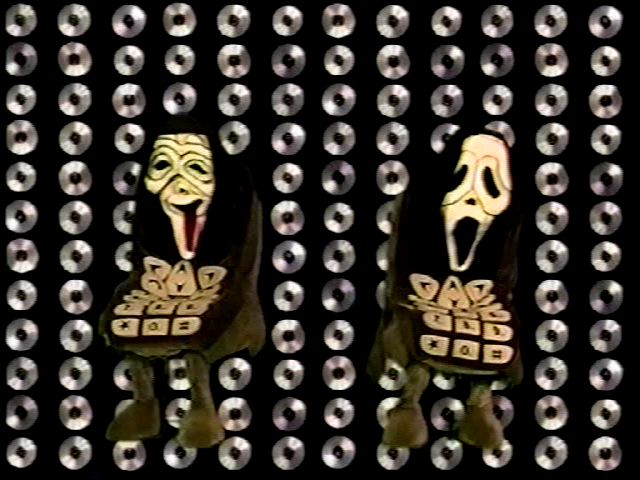
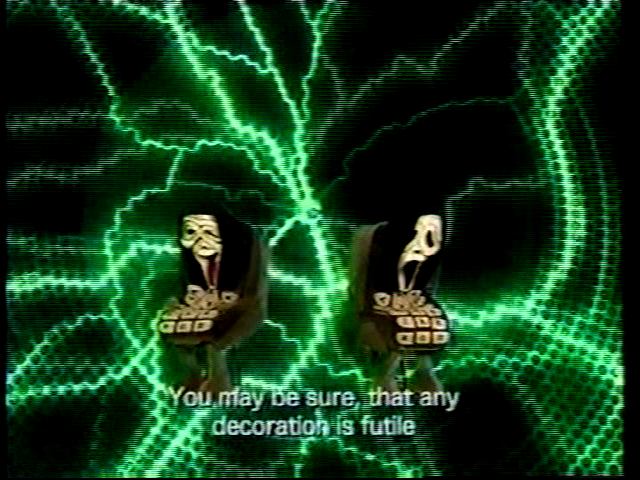
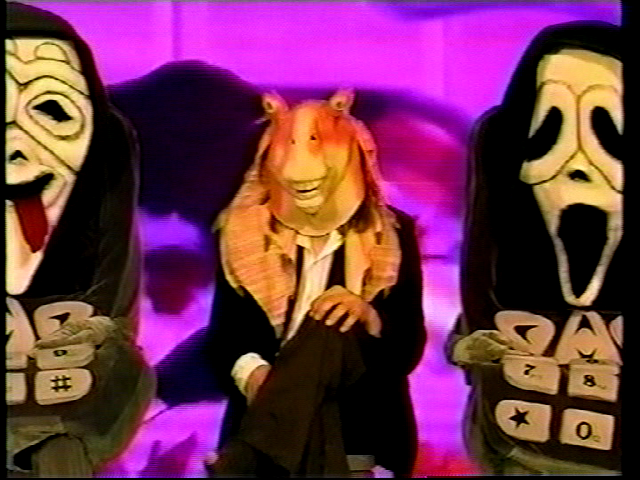

at 9:15 AM
Cyrus Frisch - Vergeef me AKA Forgive me (2001)
Tuesday, August 5, 2008
A Mediamatic screening of the film by Cyrus Frisch, in which the method actors are heavyweight addicts and the story is an intentional double of a play and borderlines on that which is wrong.
Forgive me is the film adaptation of Cyrus Frisch's controversional play Jesus/Lover, which was performed by HARDDRUG ADDICTS and ALCOHOLISTS. Frisch first plays with the actors, to later be able to find the enraged viewer who is getting worked up because it is wrong, what I am doing here.
This film with Frisch as Jesus disguised as Jerry Springer is not light on the stomach. But those who can take it will get to know some extraordinary people - even the angry ones.
Forgive me (Vergeef me) by Cyrus Frisch has recently been released on DVD by Reel23.



 Available at KaraGarga.
Available at KaraGarga.
at 1:53 PM
Leos Carax - Pola X (1999)
A successful, carefree young writer, Pierre (Guillaume Depardieu), lives in an enormous, pristine chateau in Normandy with his adoring mother, who he calls Sister (Catherine Deneuve). He is engaged to be married to a lovely young woman who adores him, and he has just reunited with his cousin, whom he loves deeply. But Pierre is haunted by a vision in his dreams of a strange, dark-haired peasant woman who attracts him in unexplainable ways. When she suddenly appears, stumbling out of the woods and claiming that she is his long-lost sister, Isabelle (Katerina Golubeva), he falls blindly, madly in love with her. Tearing out of Normandy and heading for Paris, Pierre discredits everything in his life including his family, his friends, and his money. He takes Isabelle to an abandoned warehouse run by a cult, where they live together in deranged passionate misery.
POLA X, an intense, gripping, all-consuming film, is Leos Carax's (THE LOVERS ON THE BRIDGE) most simultaneously disturbing and beautiful movie. Based on the haunting novel by Herman Melville, PIERRE OR THE AMBIGUITIES, the film breaks down all the boundaries of familial love, then proceeds to do the same for the human psyche. Featuring lush photography that tricks the eye and taunts the mind, the filming is superb. As the story progresses and grows more complicated, the scenery changes from spacious green summer foliage to cold, cluttered, industrial structure. The sound is embracing, the acting is precise, and the feeling of the film is positively captivating.




Available at KaraGarga.
at 2:08 AM
Stephen Kijak - Scott Walker: 30 Century Man (2006)
“Scott Walker: 30 Century Man” is a long-overdue look at one of the most influential and enigmatic figures in rock history.The film explores his music and career, from his early days as a jobbing bass player on the Sunset Strip, to mega-stardom in Britain’s swinging 60’s pop scene as lead singer of The Walker Brothers, to his evolution into one of the most astonishing soundmakers of the last few decades.
He’s 63 years old and released his first album in over 10 years, “The Drift” on 4 A.D. Records last year to wide-spread critical acclaim. The film features exclusive behind-the-scenes footage of the making of the album as well as interviews with friends, collaborators, and fans including, among others:
David Bowie, Radiohead, Jarvis Cocker (Pulp), Brian Eno, Damon Albarn (Blur, Gorillaz), Neil Hannon (The Divine Comedy)(DVD only), Marc Almond, Alison Goldfrapp, Sting, Dot Allison, Simon Raymonde (Cocteau Twins), Richard Hawley, Rob Ellis, Johnny Marr (The Smiths/Modest Mouse), Gavin Friday, Lulu, Peter Olliff, Angela Morley, Ute Lemper, Ed Bicknell, Evan Parker, Hector Zazou, Mo Foster, Phil Sheppard, Pete Walsh, and more.
Directed by Stephen Kijak, who brought you the delightfully deranged documentary CINEMANIA (a profile of 5 of NYC’s most manic film buffs), this is a different form of obsession altogether. Inspiring god-like devotion from fans, Scott Walker’s has a cult that has grown considerably since his 1995 release “Tilt”, a dark and difficult masterwork. His new album takes that sound further than anyone could have imagined…




Available at KaraGarga.
at 1:53 AM
Harun Farocki - Bewerbung, Die (1996)
Sunday, August 3, 2008
From his work in the fiction mode to documentary to installation, German filmmaker Harun Farocki has consistently explored ideas of language, ideology, perception, and contemporary audio-visual culture. In this unique documentary, Farocki draws on the anxiety of unemployment as he follows the efforts of several candidates who take part in a training program designed to teach them how to apply for a job. The goal is to learn how to market and sell themselves, a goal that Farocki exposes as demeaning and superficial. An insightful look at the manipulative tactics of big business, Farocki's film is as thought provoking as it is revealing. In German with English subtitles.


Available at KaraGarga.
at 10:58 PM
Various - Animated Painting (2007)
The San Diego Museum of Art organized a state-of-the-art exhibition which showcases the latest trend in animated art by contemporary artists. It ran from October 13, 2007, to January 13, 2008, and featured 25 cinematic works by 14 international contemporary artists who adapt traditional painting and drawing methods to the concepts and technologies of animation.
Animated Painting presents some of the most compelling artists working with these new hybrid strategies which have been increasingly used by contemporary artists over the last several years.
The works on display show two predominant approaches in animation. While some artists are maintaining the practice of handmade images, which is immersed in styles of traditional drawing and painting or forms of conventional animation, other artists are working with live action sources that are either self-generated or taken from popular culture and then digitally recoded into a painterly style. Animated Painting shows how digital media is transforming older art forms and how contemporary artists are providing a fresh take on the popular, commercially-dominated art form of animation. By taking animation out of its commercial context and incorporating it into fine art, artists are able to accomplish results that are not necessarily found in its commercial use and that offer a timebased method in which to convey their message. The exhibition also highlights the widespread globalization of moving image art and its growing accessibility to new audiences.
“This is a groundbreaking and visually stunning exhibition. SDMA is proud to present these challenging works,” says the Museum’s executive director, Derrick Cartwright. “As digital art has grown in popularity over the past few years, museums have a broad responsibility to contextualize these representations. Animated Painting does an excellent job at making this work accessible to diverse audiences. The exhibition provides visitors with an opportunity to explore a growing trend in contemporary art and to enjoy a wide variety of new time-based works by leading international artists.” Highlights of Animated Painting include William Kentridge’s animated film Tide Table (2005); computer animated figures by Julian Opie that will be displayed outside of the Museum; Jeremy Blake’s digital video Sodium Fox (2005); and Sadie Benning’s video projection of hand-made drawings, Play Pause (2006). In addition, Wit Pimkanchanapong has been commissioned to create a site design for the exhibition space. The artist’s ceiling design is based on an analog progression of imagery and will be printed on sheets of suspended paper. Animated Painting also showcases the close relationship between contemporary art, popular culture, and progressive musical styles as several works feature new compositions and audio soundscapes.
The artists participating in the exhibition are the Barnstormers, Sadie Benning, Jeremy Blake, Sebastián Díaz Morales, Kota Ezawa, Ruth Gómez, William Kentridge, Ann Lislegaard, Takeshi Murata, Serge Onnen, Julian Opie, Wit Pimkanchanapong, Qiu Anxiong, and Robin Rhode.
Animated Painting is accompanied by a scholarly catalogue featuring essays by the exhibition’s curator Betti-Sue Hertz, animation studies scholar Suzanne Buchan, and media theorist Lev Manovich, an exhibition checklist, artist biographies, and a DVD with sample clips of the works in the exhibition. After its run at the San Diego Museum of Art, the exhibition will be on view at the Centro Cultural Tijuana (CECUT) in Tijuana, Mexico, from October 1 through December 31, 2008, and at the Faulconer Gallery at Grinnell College in Grinnell, Iowa, from February 6 through April 19, 2009.
Animated Painting is organized by the San Diego Museum of Art. This exhibition is made possible by the generous support of the Krichman Family Fund of the Jewish Community Foundation, the Horace W. Goldsmith Foundation, and the African Arts Council of the San Diego Museum of Art. Additional support is provided by the City of San Diego Commission for Arts and Culture, the County of San Diego’s Community Enhancement Program, and members of the San Diego Museum of Art.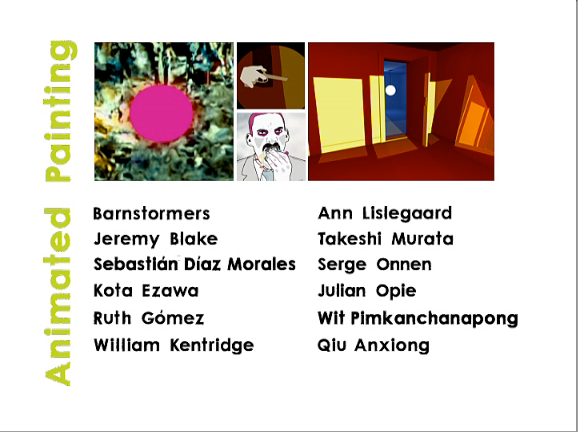
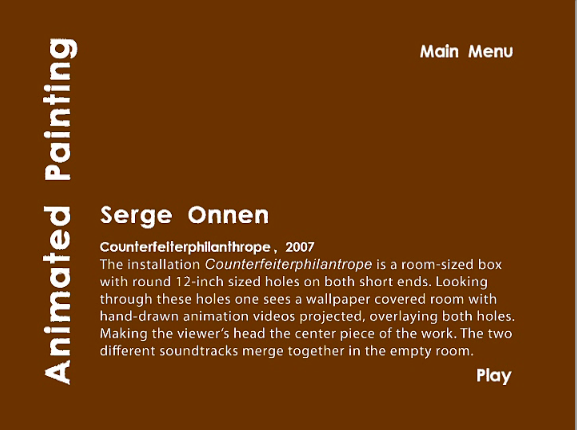
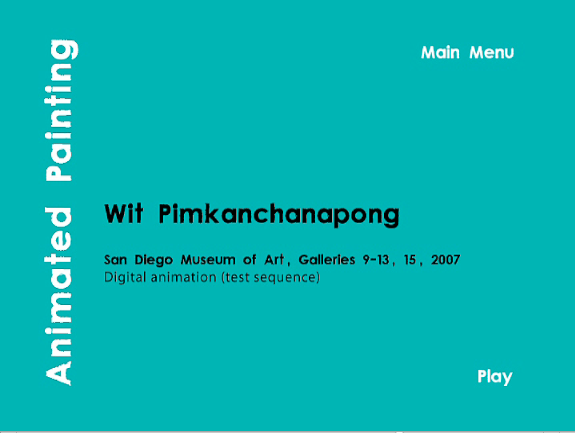

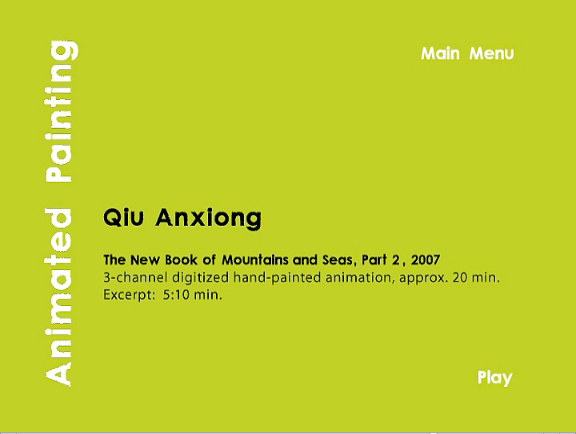
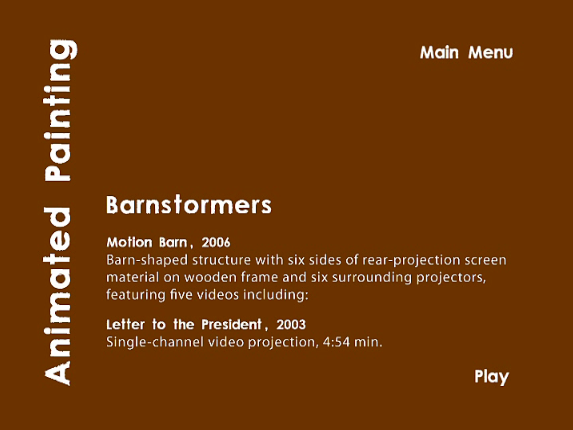

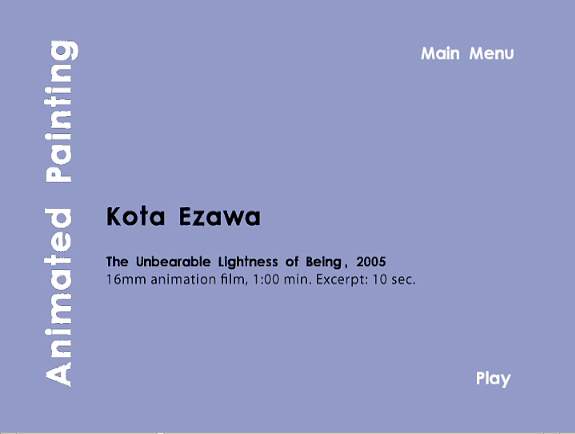


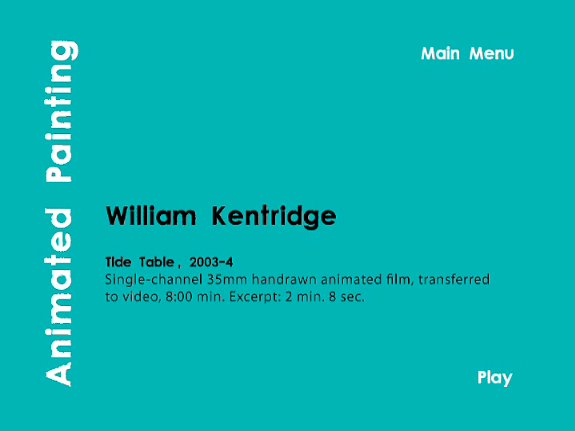
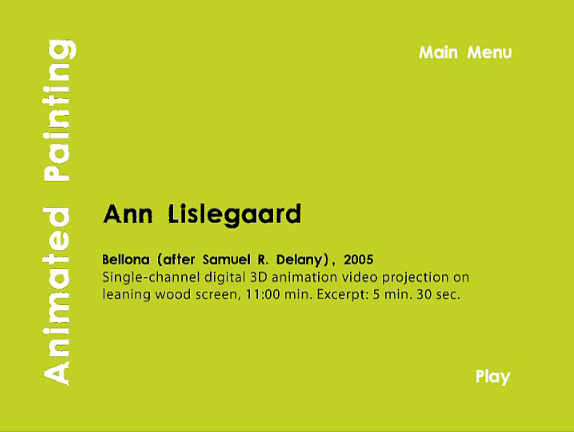


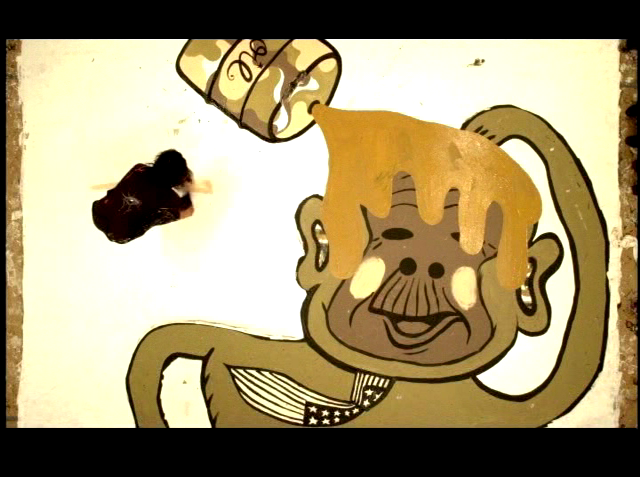
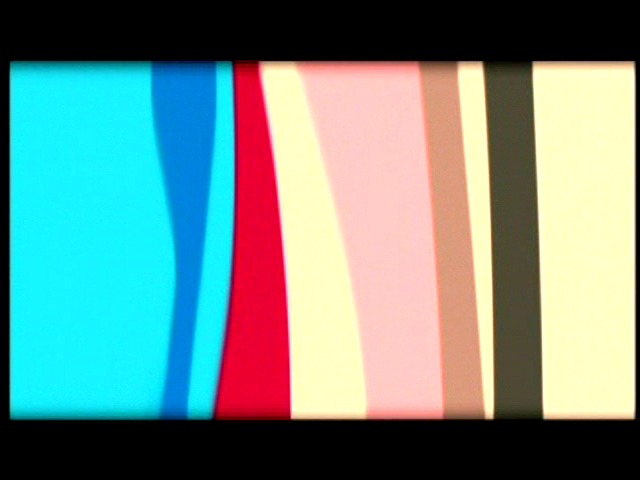
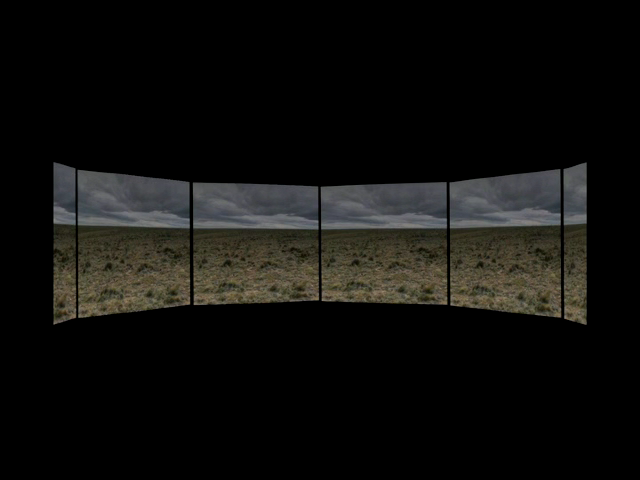

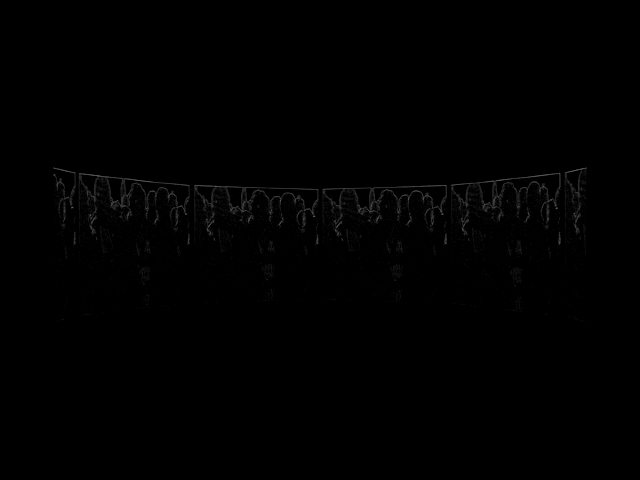
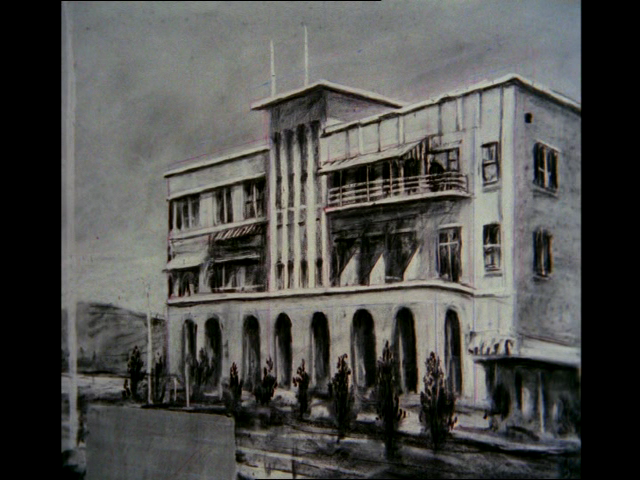


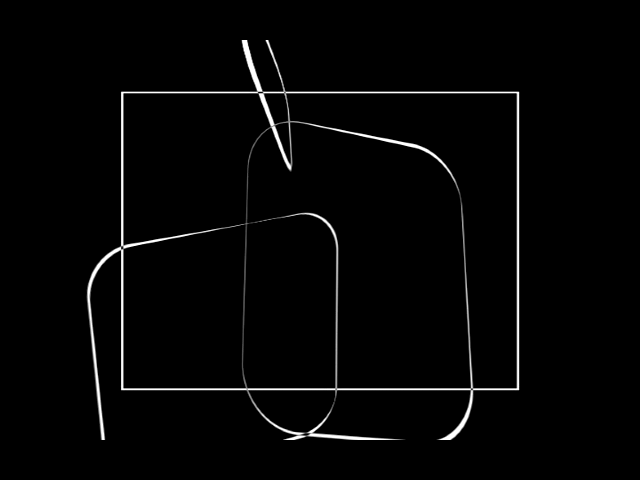
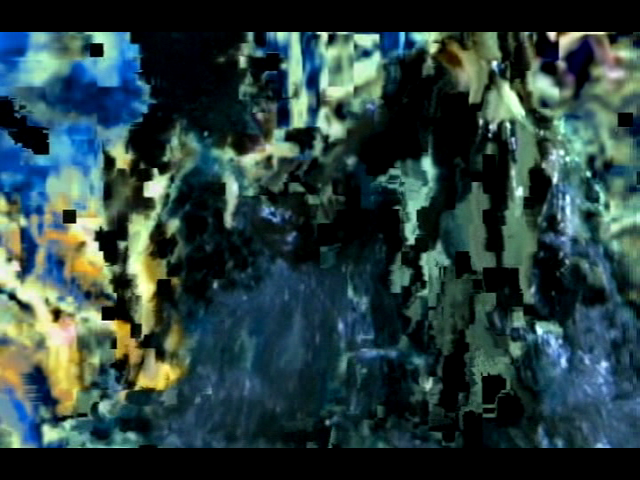
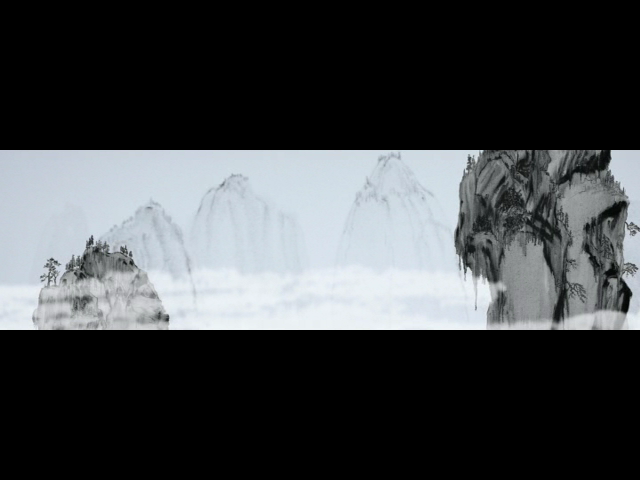
Available at KaraGarga or Amazon.
at 10:50 PM